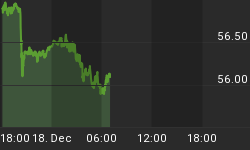As stated previously, asset monetization by small E&P operators will start in earnest in the second half of this year out of cash flow necessity. Most, if not all, smaller market capitalization companies, public or private, are still free cash flow negative (operating cash flow less capital expenditure) and only a few of the larger ones are now, or will be, based on guidance. The point is, with volumes languishing (and probably poised to decline) tied to a flat oil futures price curve and with economics marginal at $60 per barrel, many E&P operators find themselves running through hedges in 2015 and still in need to finance their already reduced capital spending.
With Wall Street unwilling to lend anymore and prospects of fall credit line redeterminations looming, further reducing liquidity, it is likely small E&P operators will turn to either mature producing asset sales or, more likely, to undeveloped assets which require more capital spending. We are seeing this being factored into stock prices as we speak, as small cap E&P valuations have collapsed to 4-6 times the Enterprise Value/Earnings Before Interest, Taxes, Depreciation, and Amortization (EV/EBITDA) from 6-8X EV/EBITDA. This not only reflects solvency risk but also the natural course of bringing assets to a price more in line with their underlying sale value.
Wall Street is famous for getting public prices at levels that magically make deals happen and, with better funded E&P companies trading at substantial premiums vs. the leveraged ones, this is what is occurring. Take the collapse of Goodrich Petroleum (GDP) as a prime example as to what is now taking place and what will continue through the latter half of this year. Here is a company with $100million in liquidity but who continues to be free cash flow negative on current strip pricing in 2015 & 2016. However, it has a capital spending budget of $100 million for 2015 and 2016 and a free cash deficit of $60 million-$80 million in each of 2015 and 2016 depending on asset price assumptions. To plug the hole it hopes to sell its Eagle Ford assets this year.
This isn't intended to make a case on GDP but to demonstrate the quantifiable ongoing stupidity of perpetuating models that aren't self-funded which were being fueled by easy money from the Federal Reserve. This also demonstrates how the OPEC strategy of maintaining an oil price ceiling is affecting U.S. E&P companies, forcing a consolidation which I believe will be unprecedented in size and scope. This will eventually improve the industry cash flow break even points, based on improved cost and scale and, as a result, cast doubt over the long term viability of the OPEC strategy. It appears the Saudis, despite being educated here in the US, have neglected their capital market & economic classes as we are witnessing the E&P model self-correcting itself. State run oil companies don't do this very well and usually fail to adjust to price movements while free market capital-based societies do.
The revival of the US oil industry will occur after the upcoming consolidation and will reduce the number of cost inefficient players as well as the short selling in group while ultimately, self-healing the industry by improving cash flows, given the likelihood of oil remaining below $100. I fully expect valuations to expand in 2016, once the wave of asset sales starts in the months ahead. These operators with plenty of cash will be the biggest beneficiaries.
On a final note, listening to the Federal Reserve yesterday it was clear that the pressure on the dollar rise is being lifted as they now realize that, despite attempts to fudge economic statistics, the US economy is in recession and rate hikes are a farce based on hope and little else. Expect the dollar to weaken considerably, breaching the 2015 lows thus supporting oil prices now and into 2016. This reality is not baked into expectations and the 1-2 percent dollar correction which took many by surprise is only the beginning.
Source: http://oilprice.com/Energy/Crude-Oil/Expect-A-Wave-Of-Consolidation-In-The-Oil-Industry.html
By Leonard Brecken of Oilprice.com















